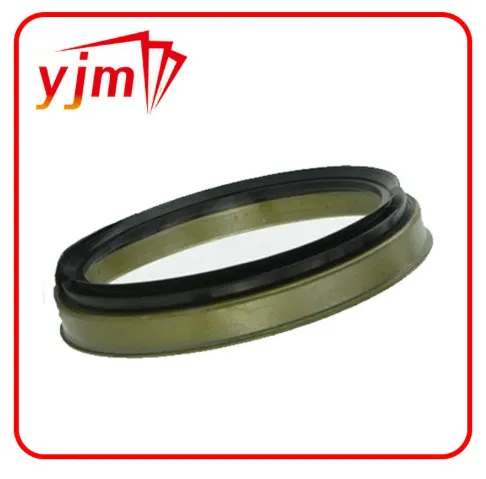Crankshaft Oil Seals Explained: Protecting Your Engine from the Inside Out
When it comes to engine performance and reliability, oil control is critical. One often-overlooked component that plays a vital role in preventing leaks and maintaining oil pressure is the crankshaft oil seal. This seal is responsible for keeping oil inside the engine while allowing the crankshaft to rotate freely. Whether it's the front crankshaft seal, rear crankshaft seal, or simply referred to as a crank seal or front main seal, understanding these components can help prevent major engine failures and costly repairs.

What Is a Crankshaft Oil Seal?
A crankshaft oil seal is a circular sealing element located at either end of the crankshaft. It’s designed to keep engine oil from leaking out of the crankcase while withstanding high temperatures, rotational speeds, and internal pressures.
There are two main crankshaft seals in a typical engine:
Front crankshaft seal (front main seal): Located at the front of the engine, behind the crankshaft pulley or harmonic balancer.
Rear crankshaft seal (rear main seal): Positioned at the back of the engine, where the crankshaft connects to the transmission.
These seals are generally made from heat- and oil-resistant rubber, sometimes reinforced with metal or PTFE (Teflon) for extra durability.
Primary functions of crank seals:
Prevent oil leaks
Maintain crankcase pressure
Protect internal engine components from dirt and moisture
A failing crank seal can lead to oil dripping under the vehicle, loss of oil pressure, or even engine damage if not addressed quickly.
Front vs Rear Crankshaft Seals: Key Differences
While both the front crankshaft seal and rear crankshaft seal serve the same purpose, they differ significantly in design, accessibility, and common failure symptoms.
Front Crankshaft Seal (Front Main Seal)
The front main seal is located at the front of the engine, surrounding the crankshaft as it exits the timing cover or engine block. It is often easier to access than the rear seal and may be replaced during:
Timing belt or chain service
Water pump replacement
Crank pulley or harmonic balancer service
Symptoms of a bad front crankshaft seal:
Oil leaking from the front of the engine
Oil buildup on the crankshaft pulley
Squealing belt due to oil contamination
Because of its exposed position, the front seal is more prone to drying, hardening, and cracking—especially in vehicles that sit unused for long periods.
Rear Crankshaft Seal (Rear Main Seal)
The rear crankshaft seal is mounted between the engine and transmission and is far more labor-intensive to access. Replacing it often requires removing the transmission, making it one of the more expensive oil leaks to repair.
Symptoms of a faulty rear main seal:
Oil leak between engine and transmission
Oil pooling at the rear of the oil pan
Low oil levels despite no visible leaks elsewhere
Rear main seals are larger and more robust than front seals, but they still wear out over time—particularly if crankcase pressure builds due to a blocked PCV system or worn engine internals.
Causes of Crank Seal Failure and How to Prevent It
Crankshaft oil seals can fail due to a combination of factors, including age, improper installation, and excessive crankshaft movement.
Common Causes of Crank Seal Failure:
Age and heat cycling: Rubber seals naturally harden, shrink, or crack over time.
Improper installation: Over-driving the seal or misaligning it can cause immediate failure.
Excessive crankshaft end play: Worn crankshaft thrust bearings can allow movement that stresses the seal.
Pressure buildup: A clogged PCV valve can pressurize the crankcase and force oil past the seal.
Contamination: Dirt and debris can wear down the sealing surface prematurely.
Preventive Tips:
Replace crank seals proactively during major engine work (timing belt, clutch, or transmission service).
Use high-quality seals from reputable brands (e.g., OEM, Victor Reinz, Fel-Pro, or Corteco).
Always inspect the crankshaft surface for wear or grooves; use a sleeve repair kit if needed.
Keep your PCV system clean and functioning to maintain proper crankcase ventilation.
Note: While seal replacement might sound simple, professional tools like seal drivers or pullers can make the process safer and more accurate.
The crankshaft oil seal, including the front main seal and rear crankshaft seal, plays a crucial role in maintaining your engine’s oil integrity and performance. A leaking crank seal might seem like a minor nuisance, but it can quickly escalate into a major issue if ignored. By understanding how these seals function, recognizing early warning signs, and performing preventative maintenance, you can avoid costly repairs and extend the life of your engine.
-
Simplifying Oil Changes: A Comprehensive Guide to Oil Drain Plugs and Their Variants
Жаңалықтар Aug.04,2025
-
Mastering Oil Drain Maintenance: Solutions for Stripped, Worn, and Upgraded Oil Plugs
Жаңалықтар Aug.04,2025
-
Fixing Oil Pan Plug Issues: Leaks, Stripped Nuts, and the Right Replacement Solutions
Жаңалықтар Aug.04,2025
-
Everything You Need to Know About Oil Drain Plugs: Sizes, Fixes, and Upgrades
Жаңалықтар Aug.04,2025
-
Choosing the Right Oil Drain Plug: A Guide to Sizes, Materials, and Drain Innovations
Жаңалықтар Aug.04,2025
-
A Complete Guide to Automotive Drain Plugs: Types, Problems, and Innovative Solutions
Жаңалықтар Aug.04,2025
-
The Ultimate Guide to Car Repair Kits: Tools and Essentials Every Driver Should Own
Жаңалықтар Aug.01,2025
Өнім санаттары















